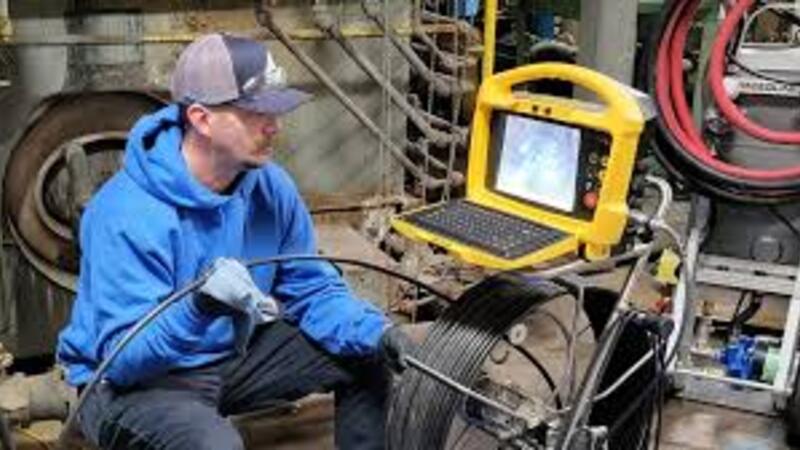In the complex infrastructure that supports modern life, the health and integrity of underground pipes often go unnoticed until a problem arises. However, proactive maintenance is crucial to prevent costly repairs, service disruptions, and environmental damage. Regular inspections using advanced camera technology have emerged as a transformative tool in the field, enabling precise assessments of pipe conditions without invasive measures. This article explores the significance of regular pipe inspections and highlights the insights gained through camera technology.
Understanding the Need for Pipe Inspections
Pipelines are the arteries of our infrastructure, transporting water, gas, oil, and sewage over vast distances. Over time, these critical networks can degrade due to various factors such as corrosion, structural weaknesses, blockages, or root intrusion. Without routine checks, these issues can escalate, leading to leaks, bursts, or contamination—disruptions that can have far-reaching consequences.
Collaborating with Industry Experts
Partnering with industry leaders such as Total Leak Detection brings several advantages:
- Specialized Knowledge: Companies like Total Leak Detection possess deep expertise in pipeline diagnostics and leak detection techniques. They understand the nuances of different pipeline materials, environments, and potential failure points.
- Cutting-Edge Equipment: These experts often utilize state-of-the-art equipment, including advanced camera systems with specialized features tailored for comprehensive pipe inspections.
- Data Interpretation: Interpretation of inspection data is crucial for making informed decisions. Experienced professionals can accurately assess inspection results, identify critical issues, and recommend appropriate remedial actions.
The Evolution of Inspection Techniques
Traditionally, diagnosing pipe problems involved excavation, which was costly, time-consuming, and disruptive. However, technological advancements have revolutionized this process. One of the most significant innovations is pipe inspection cameras—sophisticated devices designed to navigate through pipes and capture high-resolution images in real-time.
Camera Technology: How It Works
Pipe inspection cameras are equipped with high-definition cameras and LED lights attached to flexible cables. These devices are inserted into the pipe through existing access points, such as manholes or cleanouts. As the camera travels through the pipe, it transmits live footage to an operator above ground, revealing the internal condition of the pipe. The camera can pan, tilt, and rotate to provide comprehensive views, allowing inspectors to identify cracks, blockages, joint separations, or other anomalies.
The Benefits of Camera Inspections
- Accuracy: Camera inspections provide accurate and detailed assessments of pipe conditions, allowing inspectors to pinpoint issues with precision.
- Non-Invasive: Unlike traditional excavation methods, camera inspections are non-invasive, minimizing disruption to the surrounding environment and reducing costs.
- Efficiency: Inspections are swift and efficient, enabling rapid detection of problems and timely interventions to prevent further damage.
- Preventive Maintenance: Regular inspections facilitate proactive maintenance, reducing the likelihood of emergencies and extending the lifespan of pipelines.
Applications Across Industries
The versatility of pipe inspection cameras extends to various sectors:
- Municipal Utilities: Local governments use camera inspections to monitor sewer and water pipelines, ensuring public health and safety.
- Oil and Gas: Energy companies employ camera technology to assess the integrity of oil and gas pipelines, reducing the risk of leaks or spills.
- Construction: Contractors use inspections during building projects to verify the condition of existing pipelines and plan accordingly.
Case Studies: Real-World Impact
In cities like Los Angeles and New York, camera inspections have become indispensable tools for infrastructure maintenance. For instance, the Los Angeles Department of Water and Power conducts regular inspections of its expansive sewer network using camera technology. By identifying potential issues early, they can prioritize repairs and minimize service disruptions.
Similarly, in New York, aging infrastructure poses significant challenges. Camera inspections have revealed deteriorating pipes beneath the city streets, prompting proactive measures to prevent catastrophic failures.
Looking Ahead: Innovations in Pipeline Maintenance
The future of pipeline inspections is poised for further innovation. Advancements in camera technology include enhanced image resolution, 3D mapping capabilities, and automated analysis using artificial intelligence. These developments promise even more accurate assessments and predictive maintenance strategies.
Conclusion
Regular pipe inspections are not merely a precautionary measure; they are a proactive investment in the resilience and longevity of our infrastructure. Camera technology has revolutionized the way we monitor and maintain pipelines, providing invaluable insights into their condition without disruption. By embracing these advancements, industries and municipalities can mitigate risks, optimize maintenance efforts, and ensure the reliability of essential services for years to come.
In summary, the importance of regular pipe inspections cannot be overstated, and camera technology stands at the forefront of this critical endeavor, offering a clear view of what lies beneath and paving the way for a more sustainable future.
